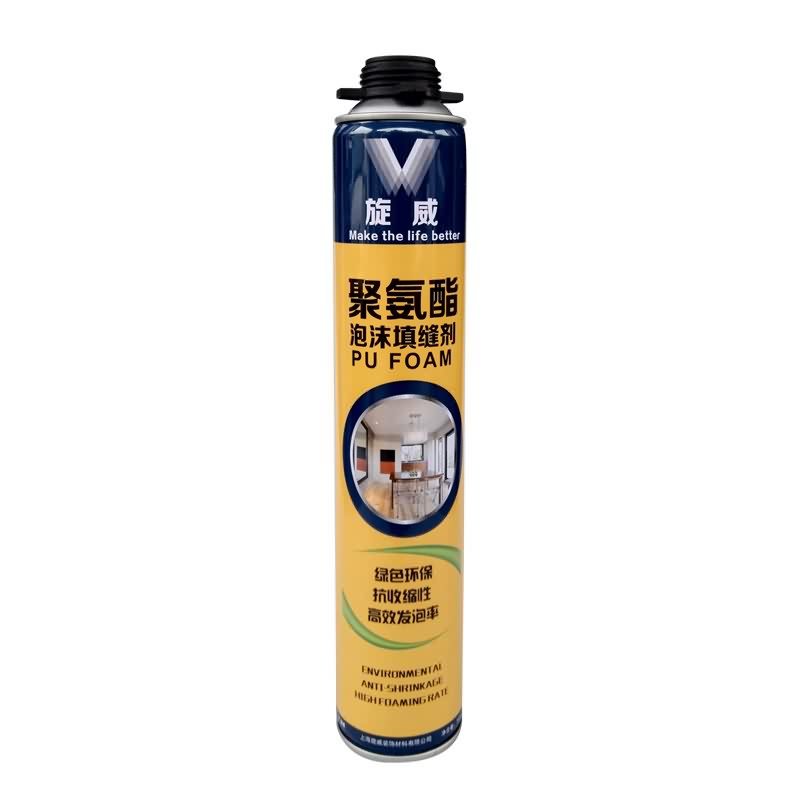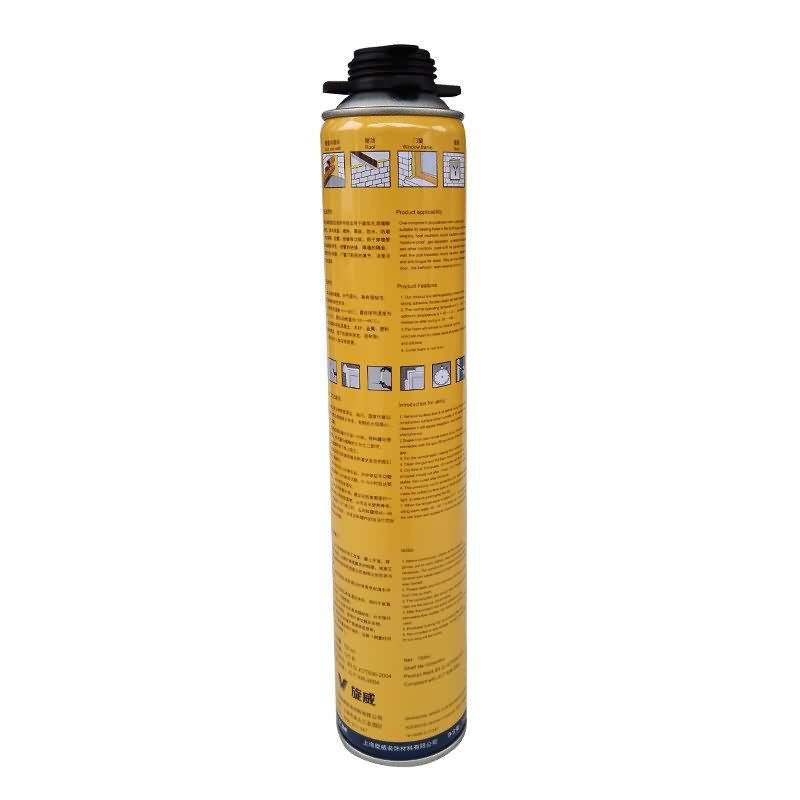23 Years Factory Siway PU FOAM Export to Puerto Rico
Short Description:
Description This product is the expansion, moisture curing, has the strong cohesiveness, elastic foam obturator structure; Save work to save time, reduce waste; High bond strength; Bubble can stick in the concrete, wood, metal, plastic, such as base material surface, but not including teflon, silicon resins; Key Features 1. Noise silencing effect 2. Strong bonding strength 3. Water & weatherproof 4. Primerless adhesion to most building materials Basic Application 1.Doors and Windows a...
Our products are widely recognized and trusted by users and can meet continuously developing economic and social needs for 23 Years Factory Siway PU FOAM Export to Puerto Rico, Our professional technical team will be wholeheartedly at your service. We sincerely welcome you to visit our website and company and send us your inquiry.
Description
This product is the expansion, moisture curing, has the strong cohesiveness, elastic foam obturator structure; Save work to save time, reduce waste; High bond strength;
Bubble can stick in the concrete, wood, metal, plastic, such as base material surface, but not including teflon, silicon resins;
Key Features
1. Noise silencing effect
2. Strong bonding strength
3. Water & weatherproof
4. Primerless adhesion to most building materials
Basic Application
1.Doors and Windows and wall body between the gap filling sealing, fixed bond
2.Language lab, studio, etc when decorating, gap to fill
Technical data sheet
|
Project |
Value |
||
|
Density, Kg/m³,Not less |
10 |
||
|
Thermal conductivity,35℃,W/(m·K) no more than |
0.050 |
||
|
Dimensional stability(23±2)℃,48,h no more than |
5 |
||
|
Operating temperature |
-10~+35℃ |
||
|
Optimum operating temperature |
+18~+25℃ |
||
|
Temperature range(After curing) |
-35~+80℃ |
||
|
Tensile bond strength kPa Not less |
Aluminum plate |
Standard condition,7d |
80 |
|
Immersion,7d |
60 |
||
|
PVC plate |
Standard condition,7d |
80 |
|
|
Immersion,7d |
60 |
||
|
Cement Plate |
Standard condition,7d |
60 |
|
|
Shear strength,kpa,Not less |
80 |
||
|
Foam expansion ratio,Not less |
Standard value-10 |
||
Certification
JC 936-2004
Color
White
Package
750ml in Bottle * 12 per box
Shelf life
12 months
Note
If you want the TDS or MSDS or other details, please contact with our sales person.
https://www.mantonggames.com/
Bike Mayhem Android & ios gameplay HD
Find more video…
Typical features of a mountain bike are wide, mostly knobby tires. The original 26 inch wheel diameter in 2.125 widths, (ISO 559 mm rim diameter) is increasingly being displaced by 29 inch wheel diameter in the average ~2.35 widths, 59-622 tire size (ISO 622 mm rim diameter) as well as the 27.5 inch wheel diameter in the average ~2.25 widths (ISO 584 mm rim diameter), some models also offer 24 wheel size.[9]
Tire size can be chosen based on bicycling terrain and size of the person. A larger tire can cause geometric problems for a short rider.
Bicycle wheel sizes are not precise measurements: a 29-inch mountain bike wheel with a 622 millimetres (24.5 in) bead seat diameter (the term, bead seat diameter (BSD), is used in the ETRTO tire and rim sizing system), and the average 29″ mountain bike tire is (in ISO notation) 59-622 corresponds to an outside diameter of about 29.15 inches (740 mm).[9]
622 mm wheels are standard on road bikes and are commonly known as 700C. In some countries, mainly in Continental Europe, 700C (622 mm) wheels are commonly called 28 inch wheels.[9] 24 inch wheels are used for dirt jumping bikes and sometimes on freeride bikes, rear wheel only, as this makes the bike more maneuverable. 29 inch wheels were once used for only Cross Country purposes, but are now becoming more commonplace in other disciplines of mountain biking. A mountain bike with 29″ wheels is often referred to as a 29er, and a bike with 27.5 inch wheels is called a 27.5 mountain bike or as a marketing term ″650B bike″.[9]
Wheels come in a variety of widths, ranging from standard rims suitable for use with tires in the 1.90 to 2.10 in (48 to 53 mm) size, to 2.35 and 3.00 in (60 and 76 mm) widths popular with freeride and downhill bicycles. Although heavier wheelsets are favored in the freeride and downhill disciplines, advances in wheel technology continually shave weight off strong wheels. This is highly advantageous as rolling weight greatly affects handling and control, which are very important to the technical nature of freeride and downhill riding.
A fat tire bicycle
The widest wheel/tire widths, typically 3.8 in (97 mm) or larger, are sometimes used by icebikers who use their mountain bikes for winter-time riding in snowy conditions.
Manufacturers produce bicycle tires with a wide variety of tread patterns to suit different needs. Among these styles are: slick street tires, street tires with a center ridge and outer tread, fully knobby, front-specific, rear-specific, and snow studded. Some tires can be specifically designed for use in certain weather (wet or dry) and terrain (hard, soft, muddy, etc.) conditions. Other tire designs attempt to be all-around applicable. Within the same intended application, more expensive tires tend to be lighter and have less rolling resistance. Sticky Rubber tires are now available for use on freeride and downhill bikes. While these tires wear down more quickly, they provide greater traction in all conditions, especially during cornering. Tires and rims are available in either tubed or tubeless designs, with tubeless tires recently (2004) gaining favor for their pinch flat resistance.
Tires also come with tubes, tubeless and tubeless-ready. Tires with tubes are the standard design and the easiest to use and maintain. Tubeless tires often have better performance because you can run them at a lower tire pressure which results in better traction and increasing rolling resistance. Tubeless-ready tires are tires that can use tubes or go tubeless. A liquid sealant is used without the tube to secure the seal to the rim.[10] Popular tire manufacturers include Wilderness Trail Bikes, Schwalbe, Maxxis, Nokian, Michelin, Continental, Tioga, Kenda, Hutchinson Specialized and Panaracer…………..




